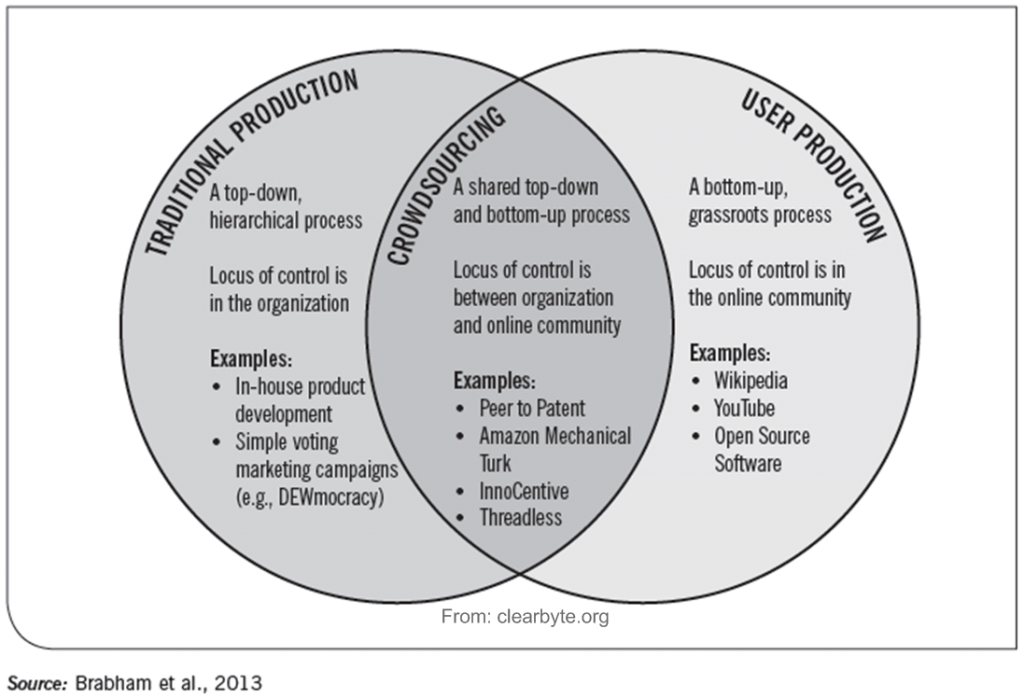This is the second article (Article # 1) on how to source the crowd and create value for public sector.
Crowdsourcing is an online-based process based on the combination of two perspectives in order to create the desired affect and benefit. One perspective is from the part that initiates the task and wants to get some task done. The control lies with the part that defines the task of when, how and when it should be done. This approach is called top-down and means that the affect of the task goes to those who initiate it. For example, it may be when an organisation wants to communicate an advertising campaign via social media to generate as many “likes” as possible. The task brings only value to the initiated part and no real value to the crowd that perform the task.
The second perspective focuses on the community and what the collective wants to achieve. The task can be initiated by individuals in the collective, but where others will join to complete the task. When the task is completed the result and value benefits the collective, this approach is called bottom-up. An example of this is Wikipedia, where anyone can join and create and edit other people’s articles. The benefits and value benefits the collective that carry out the task, as well as anyone else who are interested in the outcome.

The basic idea of crowdsourcing is to create value for both the initiator and executor. One factor to consider is whom has control of the media (on-line tool) used for communication, if it is driven by a neutral part or the initiator. If only one is in control of the communication, the other part could perceive that the process is less open and less inclined to contribute.
Information and Knowledge management
By using crowdsourcing for collecting and structuring information, public organisation can acquire knowledge with significantly less resources than performing the task on their own. A prerequisite for success is that the description of the task must be clear, what is to be collected, how it’s gone be collected and when it will be collected. The goal of the task must equally clear and communicated before the work begins. The dissemination of the result or the affect of the completed task is also important. These are some factors that will determine how many people that will buy in and find the task interesting enough for using their own time to contribute to the task.
One example of successful knowledge management is the U.S. Patent Office (USPTO) project called Peer-to-Patent. This case shows that users can perform complex patent issues, provided they have the perquisite knowledge of the field at hand. What case shows is how the collective helps the authority to determine whether the patent application is a new innovation or builds on previous knowledge or technology. This project was so successful and save the Agency substantial resources and now part of organisations operation. The project has also spread to Australia, Japan, South Korea and the UK.
